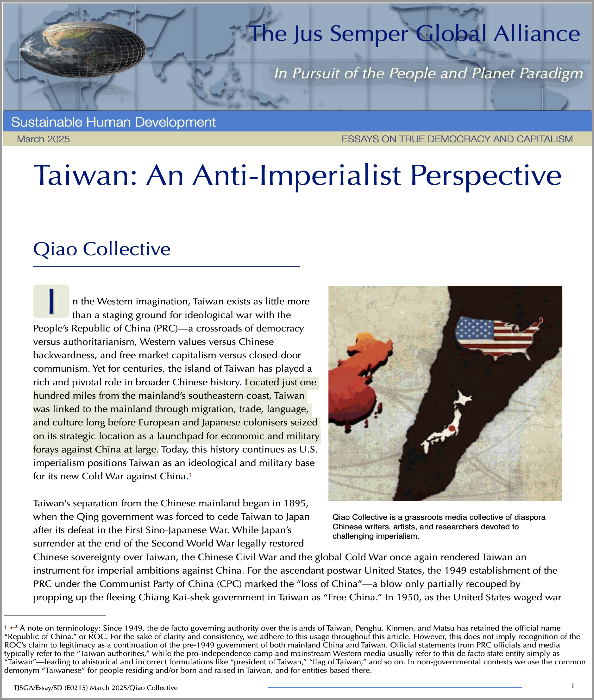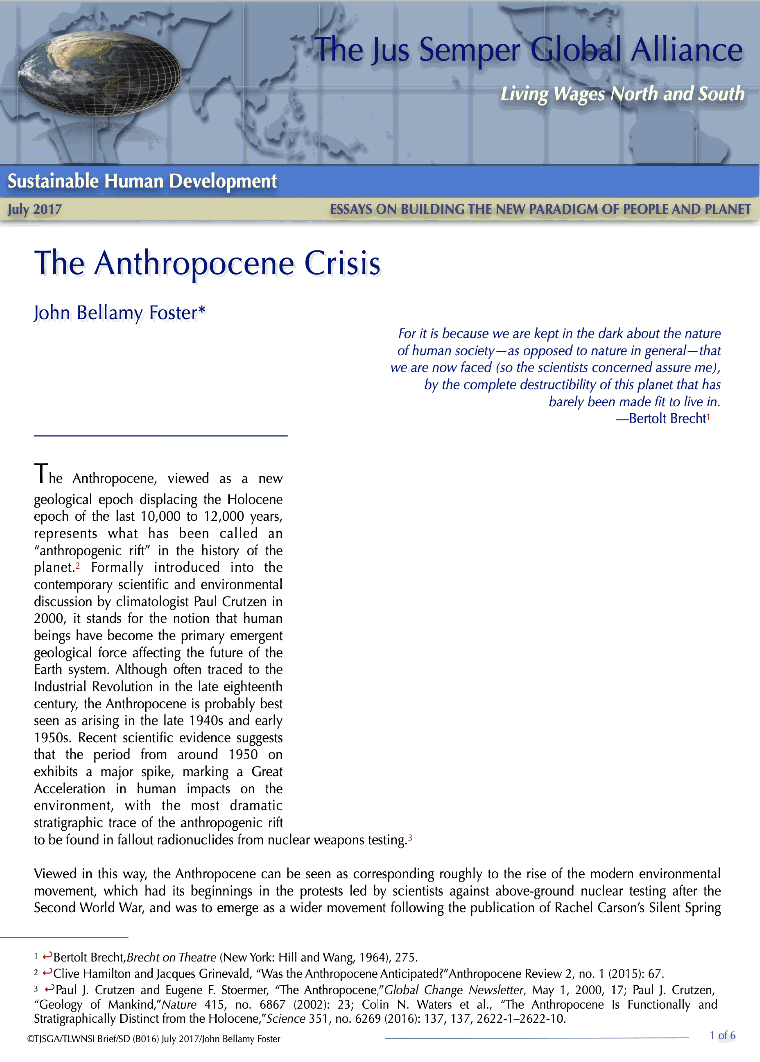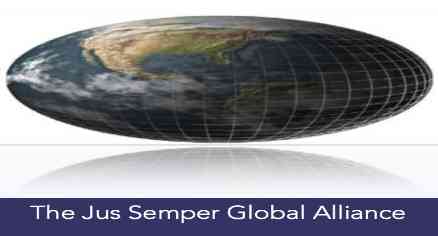Bellamy Foster points at the rather evident and urgent need to replace and not fix capitalism, so that we can aspire to "rebuild the house of civilization under different architectural principles, creating a more sustainable metabolism of humanity and the earth. The name of the movement to achieve this, rising out of the socialist and radical environmental movements, is ecosocialism, and Facing the Anthropocene is its most up-to-date and eloquent manifesto." Yet he ponders on the possiblility that many would rather err on the side of denialism than on the side of “catastrophism” and hesitate to take action at this level until we know more. For such possibility he offers very concrete advice quoting Bertolt Brecht’s didactic poem “The Buddha’s Parable of the Burning House”: The Buddha still sat under the bread-fruit tree and to the others, To those who had not asked [for guarantees], addressed this parable: “Lately I saw a house. It was burning. The flame Licked at its roof. I went up close and observed That there were people still inside. I entered the doorway and called Out to them that the roof was ablaze, so exhorting them To leave at once. But those people Seemed in no hurry. One of them, While the heat was already scorching his eyebrows, Asked me what it was like outside, whether it wasn’t raining, Whether the wind wasn’t blowing, perhaps, whether there was Another house for them, and more of this kind. Without answering I went out again. These people here, I thought, Must burn to death before they stop asking questions. And truly, friends, Whoever does not yet feel such heat in the floor that he’ll gladly Exchange it for any other, rather than stay, to that man I have nothing to say.” So Gautama the Buddha. For a full read of this essay, click here or on the picture t
For a full read of this essay, click here or on the picture to download the pdf file.
|

- © The Jus Semper Global Alliance
| Home |  | Resources |  | Economic Data |  | The Antrhopocene Crisis |


